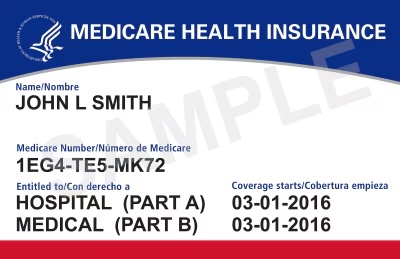Caring for an aging parent is a challenging role that can take a toll on even the most dedicated and loving families. The responsibility to ensure the safety and well-being of a parent with a dementia diagnosis or other health concerns can be even more overwhelming. Adding this to all the other responsibilities of family life compounds caregiver stress. As a family caregiver, you want to provide your parents with the best possible care. But the financial strain and constant worry can affect your own health and well being. This is where home monitoring systems for elderly individuals come into play. This affordable, innovative solution is a new way to help reduce caregiver stress by giving you the ability to fix a potential problem BEFORE an emergency. In this blog post, we’ll explore the pros and cons of four popular care tools including video cameras, emergency buttons, fall monitors, and home monitoring systems for the elderly.
Video Cameras: If You’re Not Watching, Who Is?
In today’s digital age, video cameras have emerged as a cheap and enticing tool for monitoring our aging parents. Generally affordable and relatively easy to deploy, they promise a watchful eye on the resident inside a home. It sounds easy and practical, but in reality, it’s imperative to consider their limitations before you commit.
First and foremost, most people agree that cameras should never intrude upon the sanctity of private spaces such as bedrooms and bathrooms. The problem is, according to the CDC, it’s in these very rooms that accidents are most likely to occur. As a caregiver, the bathroom is an especially significant blind spot.
Equally pressing is the issue of time. Unless a camera is monitored continuously — an impractical expectation for most family caregivers — the chance of missing an emergency as it unfolds is high. This reality highlights the fatal flaw in relying solely on cameras for real-time or even early intervention.
Privacy and security concerns further complicate the practicality of cameras in the home. The risk of data breaches poses a genuine threat, potentially exposing our loved ones to frightening vulnerabilities. Just as you wouldn’t want a digital criminal to watch your baby sleeping in their crib, nor can we tolerate a bad actor knowing when our elderly loved one is home alone.
In sum, while video cameras may offer the illusion of peace of mind, they remain a partial solution at best. Their usefulness must be balanced with ethical, practical, and security-related issues, highlighting the necessity for a better tool for caregivers.
Wearable Emergency Buttons: The 3 Questions Every Caregiver Must Ask Themselves
Wearable emergency buttons seem like a straightforward solution to a complex problem – how to keep a loved one safe. They’re advertised with promises of safety and independence for our aging loved ones. However, the practicality of these devices demands scrutiny by stressed caregivers.
Question 1: Will my elderly parent consistently wear their wearable? Wearables only work when your loved one wears them! The truth is, an elderly parent, especially one navigating the early stages of dementia, may not have the cognitive capability to consistently manage their device whether it be locating, charging, remembering, and actually choosing to wear their device all the time. If a loved one cannot be trusted to take their meds or remember an appointment, managing a wearable 24 x 7 may be too much to ask.
Pride, vanity, or the desire to hide “neediness” are real issues for wearable compliance. This resistance isn’t merely a matter of preference but a profound statement of an older adult’s fear of appearing needy or losing independence.
Question 2: Will my loved one be capable in an emergency situation even when they’re injured, disoriented, afraid, or under extreme duress? Quick decision-making in an emergency is far from straightforward. For a parent with cognitive decline or memory issues, assessing the severity of a situation is a risky proposition. Even if an older adult under duress wants to push the button, the device must be within reach, charged, and accessible.
Question 3: As a caregiver, will I be less stressed if I shift my responsibility for emergency decision making to my loved one and their button? For even the most capable older adults, reluctance to push that button often stems from the fear of jeopardizing independence by seeking help.
A charged device, let alone one that’s within reach during a crisis, assumes a level of preparedness and cognitive capability that some of our loved ones unfortunately have lost. Thus, while emergency buttons aim to alleviate caregiver stress, they inadvertently introduce a layer of risk because they rely on the very individuals we aim to protect to make critical decisions in their most vulnerable moments.
Fall Monitors: Before the Fall or Too Little, Too Late
Fall monitors represent a promising technology in the quest to safeguard our aging loved ones. Designed to alert caregivers after an older adult has experienced a fall, these devices can be a helpful tool. Yet, while they address an important caregiver concern, their capability is singularly focused on reporting a potential fall. This is a reactive rather than preventive solution that for some, provides too little help too late.
Where a loved one falls can be an issue. The necessity for the fall to occur within the proximity of the device underscores a significant limitation: for comprehensive coverage of a living space, caregivers must purchase multiple units of this expensive device, even in a small room like a bathroom where catastrophic falls are likely to occur. This not only ramps up the initial cost but also incurs ongoing monthly subscription fees, making fall reporting an expensive proposition.
A further complication arises with the fall monitor’s placement limitations. Today’s devices cannot “see” through obstructions, meaning that walls, corners, and furniture can create blind spots in their coverage. What about the narrow space between the bed and the wall where a loved one may fall out of bed? Not all bedrooms lend themselves to full coverage by the device.
The necessity for these units to be plugged into an outlet further restricts their strategic placement, particularly in danger areas like staircases where falls are a looming risk.
While these devices indeed encourage a response post-incident, they do not offer a solution to prevent falls from occurring in the first place. The technology behind fall monitoring is evolving, yet today remains impractical and unaffordable for full living space coverage for most caregivers. Consequently, caregivers are stressed with blind spots, questioning if the investment genuinely aligns with the ultimate goal of comprehensive safety for aging parents.
Reduce Caregiver Stress with Affordable Home Monitoring Systems for the Elderly by Industry Leader envoyatHome
Under the pressure of unrelenting caregiver stress, the quest for a solution that offers both peace of mind and affordability has been paramount. The industry leader of solutions FOR CAREGIVERS, envoyatHome, has pioneered an affordable home monitoring system of the elderly, designed specifically for caregivers of older adults who age in place. Under the company’s guiding principle, “When you can’t be there yourself, we’re your trusted ‘envoy at home,'” this innovative system stands out as a beacon of hope for those managing the care of a parent with dementia or other vulnerabilities.
The benefits of employing envoyatHome’s system are multifold, addressing the crucial needs of both caregivers and their elderly loved ones. It’s not just a fall monitor; it’s a comprehensive caregiving assistant, offering real-time alerts when a loved one may be at risk and behavioral insights that you can share with doctors to proactively ensure your loved one’s safety and well-being. This level of oversight and care, delivered to a caregiver’s mobile phone, has garnered high praise from family caregivers, clinical professionals, and geriatric case managers:
-
“I don’t know how I would manage without it. envoyatHome keeps me sane in this impossible situation called remote caregiving.”
-
“I’m a full-time nurse. I’m so impressed I recommend it to my patients’ families.”
-
“envoyatHome is the only tool I’ll use before the patient needs 24-hour care.”
-
“I thought my MIL was OK with a pendant button until envoyatHome found her on the bathroom floor. She never pushed the button. ER doc said he sees it all the time.”
-
“We saved $300,000 by using envoyatHome for my father-in-law.”



